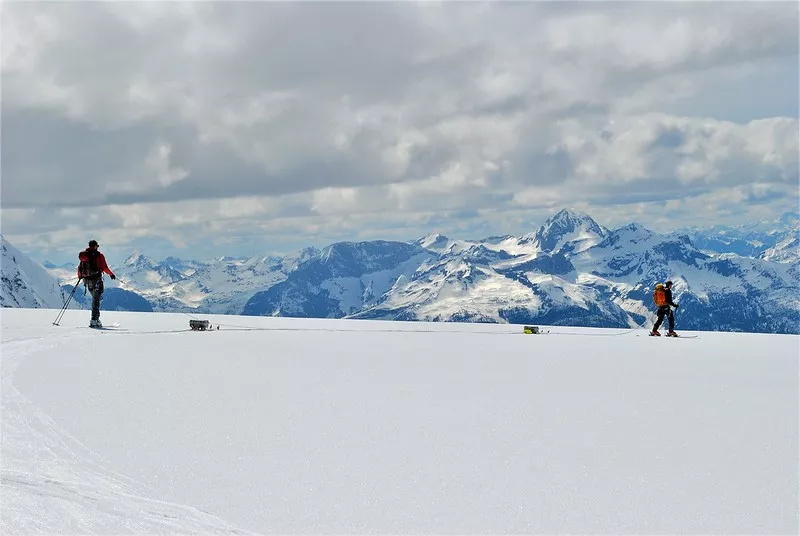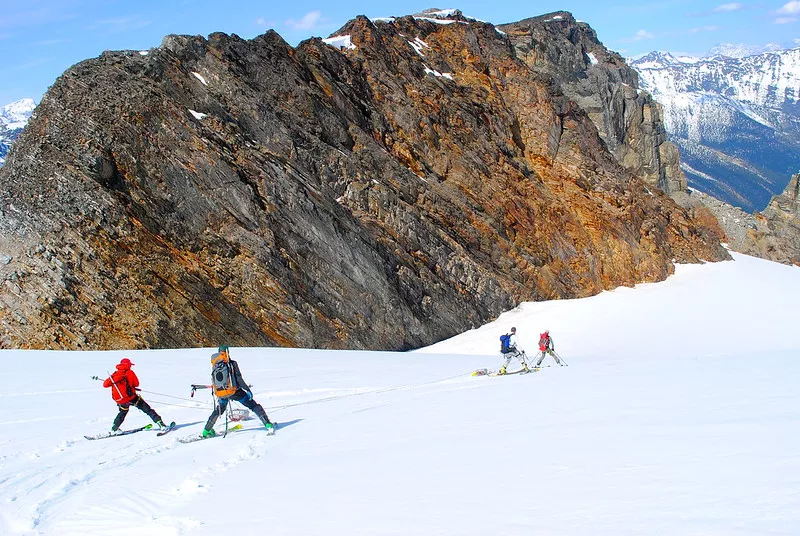UNBC study reveals Columbia Basin glaciers larger than originally thought

Glaciers in B.C.’s Columbia River basin are 38 per cent thicker in mass than originally thought, according to research led by the University of Northern British Columbia.
Despite the increased thickness, they still predict, based on current observed rates of glacier mass loss that glaciers would disappear from the basin in about 65 – 80 years.
The first-of-its-kind research in the Columbia Mountains was published this fall in the Journal of Glaciology titled Bias corrected estimates of glacier thickness in the Columbia River Basin, Canada.
Ben Pelto, who successfully defended his UNBC Natural Resources and Environmental Studies PhD dissertation in October, is the lead author in the study. The research was supported by the University of Victoria hosted and led Pacific Institute for Climate Solutions (PICS).
“Our study aligns with evidence from separate studies which found that glaciers in the basin will lose 60 to 100 per cent of their ice by 2100, depending on green-house gas emissions,” Pelto explains. “Disappearance of these glaciers will negatively affect the basin’s surface hydrology, freshwater availability and aquatic ecosystems, potentially affecting fish stocks and habitat.”

The researchers calculated the glaciers’ true size by using ice-penetrating radar, towed by skis, to measure ice thickness over five glaciers in B.C.’s Columbia Mountains from 2015-2018. They then combined that data with two previous surveys for two glaciers in the Rocky Mountains.
After analyzing more than 34,000 data-points measured over 182 kilometres, they found that glacier thickness is, on average, 38 per cent thicker than previous computer model estimates. They also calculated that the ice volume for the Upper Columbia Basin is 122.5 ± 22.4 km3, equivalent to five times the volume of Okanagan Lake, which is 23 per cent greater than the range of previous estimates.
Pelto’s PhD supervisor Dr. Brian Menounos is a co-author on the paper.
“There is little doubt that our glaciers will continue to melt throughout the remainder of this century, and this retreat will arise from our continued use of fossil fuels,” said Menounos.
“Exactly where glacier loss will occur most rapidly depends on numerical models simulate the response of future glacier change. Validating and improving these physically-based models critically depend actual observations like ice thickness.”
Five of the seven glaciers the researchers studied lie within the Columbia Mountains, including Conrad, Kokanee, Zillmer, Illecillewaet, and Nordic glaciers), while the West Washmawapta and Haig glaciers lie within the Rocky Mountains.
The research was supported by the Columbia Basin Trust, Pacific Institute of Climate Solutions, Natural Sciences and Research Council of Canada, Tula Foundation, BC Hydro and other agencies.
The Columbia River basin encompasses portions of seven states of the United States and B.C.
The basin produces more than 40 per cent of hydroelectricity in the U.S. The Canadian portion of the upper basin comprises of 15 per cent of the watershed's total area and provides 30 to 40 per cent of its total runoff, predominately from snowmelt, but also ice.
